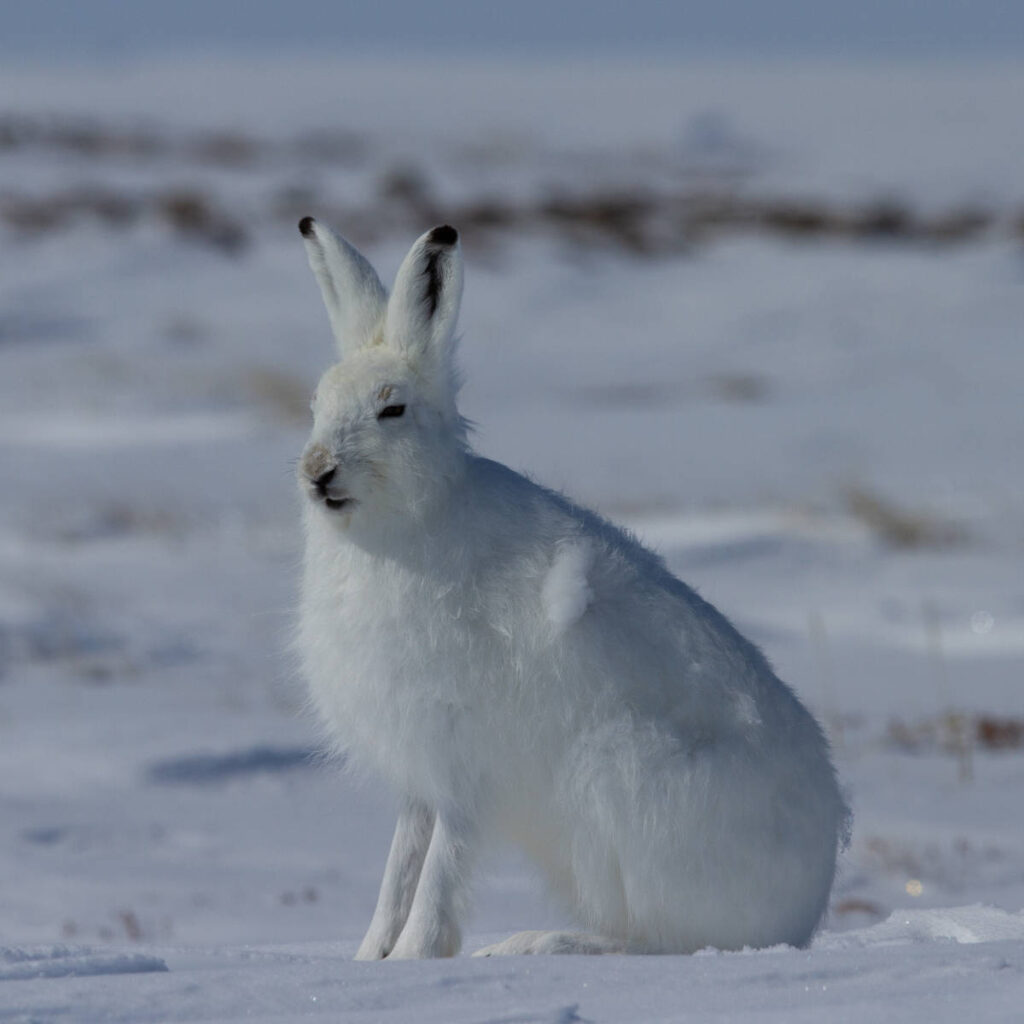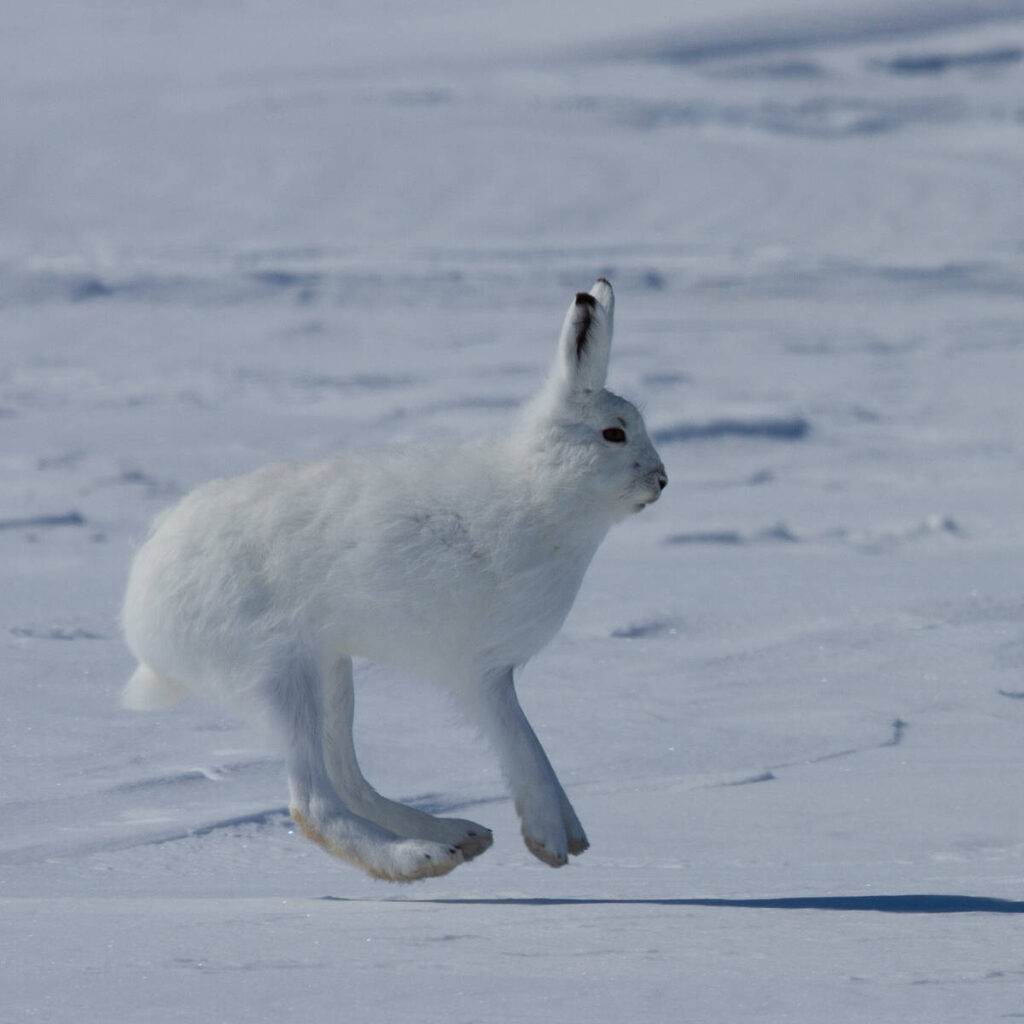Last Reviewed and Updated on January 18, 2023
Living in some of the harshest environments in the world, the arctic hares developed many adaptations to help them thrive.
Learn some of the most interesting facts about Arctic hares, from their social habits to the fact that their lifespan is still a mystery to us.

1. They are usually solitary but can form larger groups as well
Arctic hares are generally solitary, moving around alone. But they may also form groups, which can be as large as a few hundred individuals.
2. They are one of the largest hares
They are one of the largest living lagomorphs, a group of animals including hares, rabbits, and pikas. On average, an adult individual can measure anywhere from 17 to 28 inches / 43 to 70 cm in length (excluding the tail).
3. Arctic hares have many predators
In the harsh environment they live in, they are desirable prey. Many animals prey upon the arctic rabbits; arctic wolf, arctic fox, red fox, grey wolf, and snowy owl, being just a few.
4. They have proportionally shorter limbs compared to other hares
This is one of the adaptations to the cold habitat they live in. Shorter limbs, ears, and a stockier build give arctic hares less surface area from which to lose heat. It’s all about conserving as much energy as possible.

5. They eat snow to get water
It’s hard to get fresh running water in habitats where temperatures are below freezing. Arctic hares get their water by eating snow.
6. When resting, they curl into a ball
They maintain an almost spherical shape when resting; this position allows them to conserve heat better.
7. Baby arctic hares are called leverets
The average litter size is 5.4, and arctic hares can have up to 8 offspring. The leverets stay within their mother’s range until they can survive on their own.
8. We don’t know what the lifespan of arctic hares is
One of the most intriguing facts about arctic hares is the fact we don’t know what their actual lifespan is. They don’t do well in captivity and survive for only about a year and a half at most. There is no firm evidence about their life span in the wild; only anecdotal evidence suggests they may live three to five years in the wild.
9. For many, the color of their fur changes with the seasons
In winter, their fur is white, but their fur becomes grayish brown during the spring and summer months. The color of their coat provides good camouflage all year round.
Populations that live in northernmost habitats are always white.
10. They mainly feed on woody plants
They are herbivores, or, to be more specific, folivores, as their diet primarily consists of leaves.
